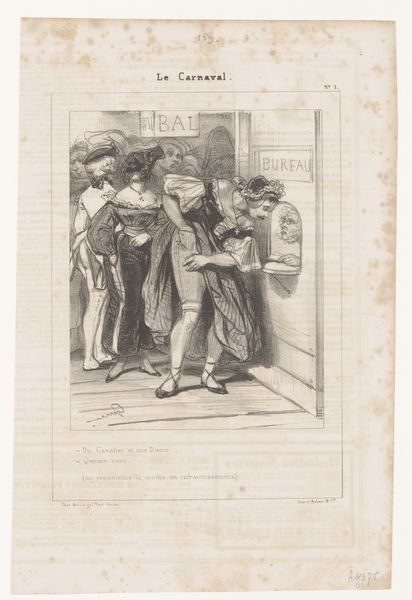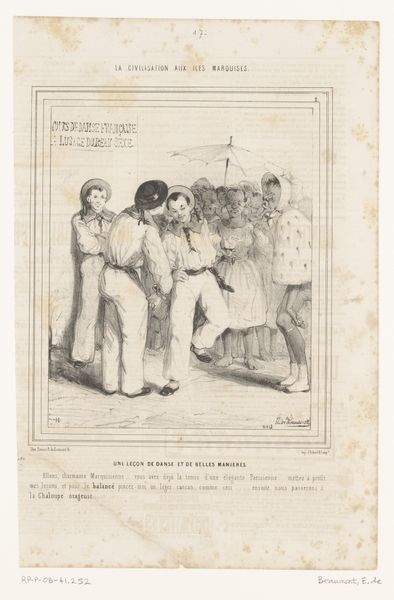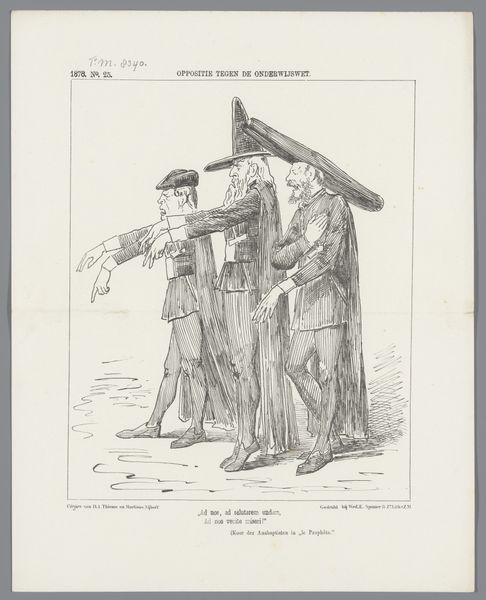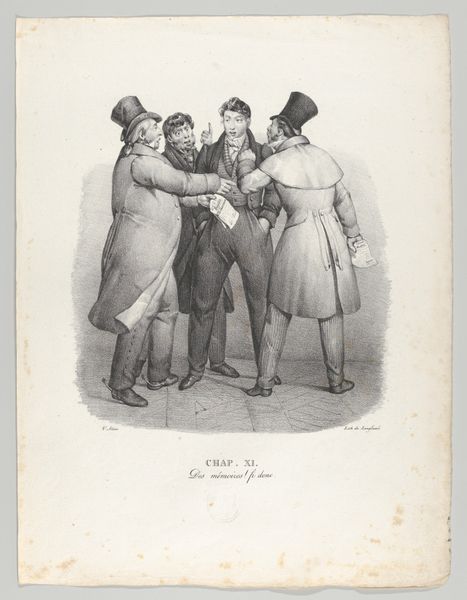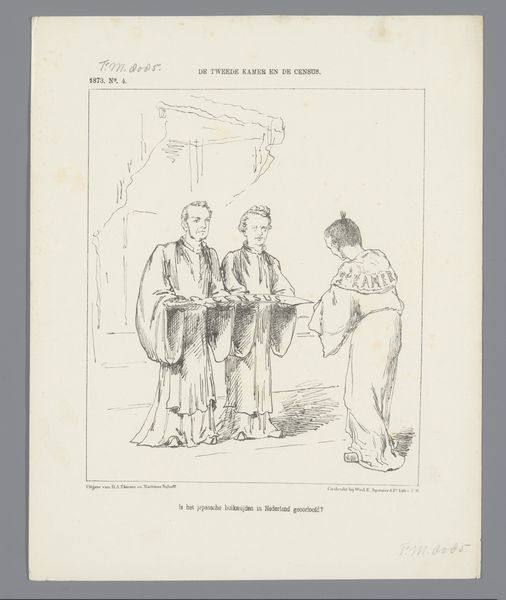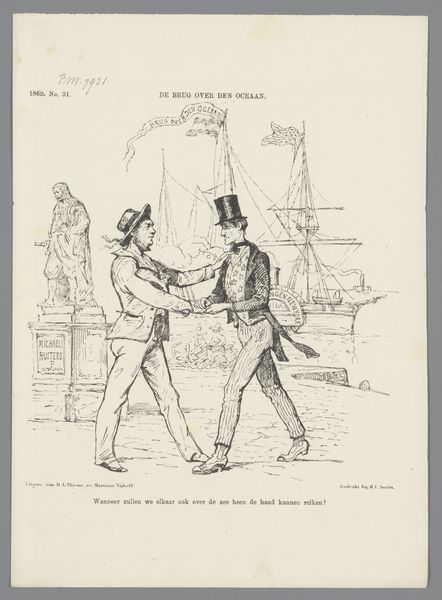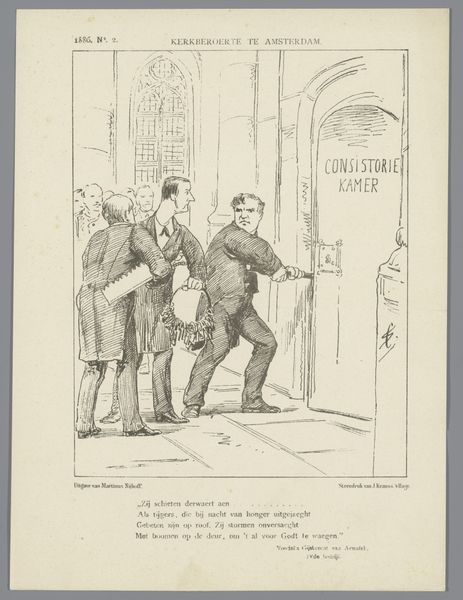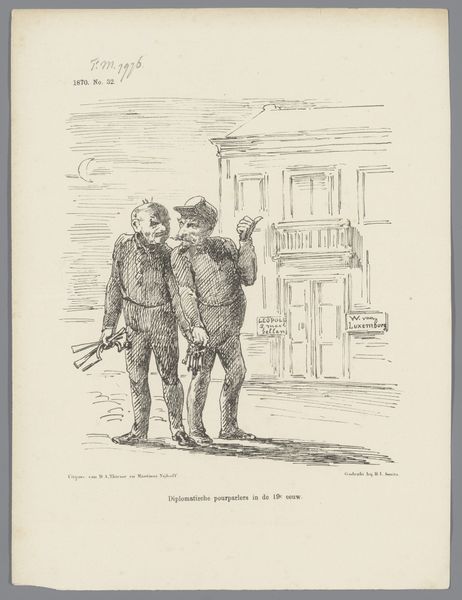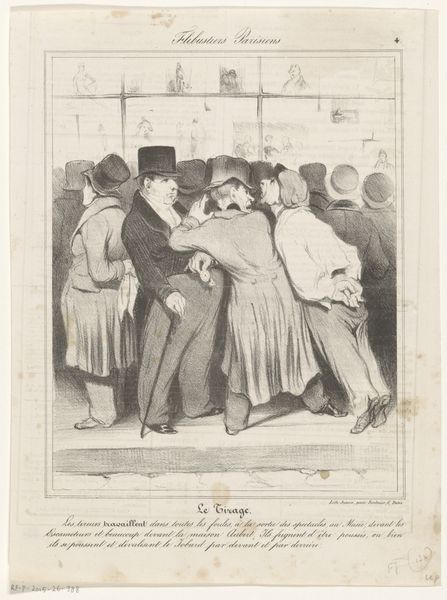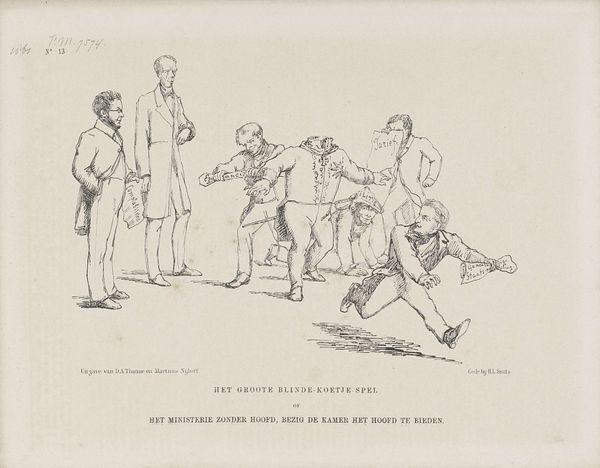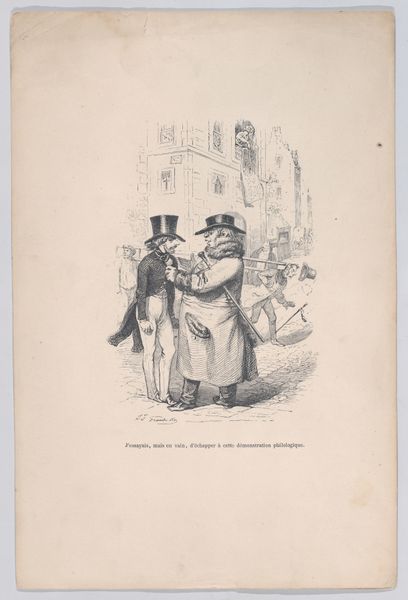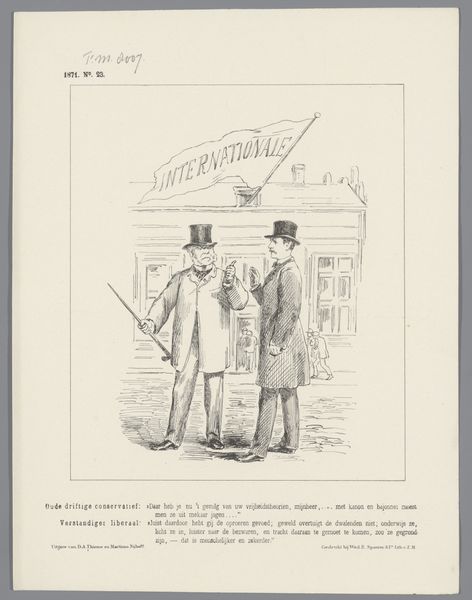
print, engraving
# print
#
caricature
#
old engraving style
#
figuration
#
line
#
genre-painting
#
history-painting
#
academic-art
#
engraving
Dimensions: height 275 mm, width 215 mm
Copyright: Rijks Museum: Open Domain
Curator: Here we have a fascinating print from 1874 by Johan Michael Schmidt Crans, titled "Spotprent over het Atjeh debat in de Tweede Kamer," which translates to "Caricature about the Aceh debate in the Second Chamber." It's an engraving, rendered in a distinct line style. Editor: Wow, that's quite a title! It's mostly monochrome—sort of austere, official, yet… I can't help but smile. There is this sense of frustrated energy at play here. It looks like the guys can't seem to push themselves through the door and get what they want! Curator: It indeed offers us a glimpse into a heated political moment. The subject is the parliamentary debate regarding the Aceh War, a conflict that had significant ramifications for Dutch colonial policy in what is now Indonesia. The "Second Chamber" refers to the lower house of the Dutch parliament, which played a crucial role in shaping colonial legislation and public discourse. Editor: Oh, I see! So, we’re looking at political players literally pushing to be heard, to force their way in. Is the poor doorman telling them they are late, from what the lower print suggests? I almost pity them—or perhaps the doorman? Curator: Exactly. The text beneath adds to the caricature. It seems to say, “So late, go home, come back on time tomorrow!" in Dutch, emphasizing the lateness and possibly inefficiency surrounding the debate. Editor: It certainly does a great job satirizing bureaucracy! You've got this crowd of eager (or perhaps not so eager) politicians seemingly struggling against an immovable object, their collective weight against the patience of one gatekeeper. Makes you wonder if some things ever change! Curator: Political satire in art always reflects and shapes public opinion. These prints would circulate widely, influencing how citizens viewed their representatives and the issues of the day. Crans cleverly captures this sentiment in this compact work. Editor: This really shows that humor can be a powerful tool. I have found a little spark of understanding a century-and-a-half on—it almost transcends time and place to a more relatable commentary about political maneuvering and discourse. Curator: Indeed. And the fact that we can still glean insight and amusement from it speaks to the enduring power of art to reflect, critique, and engage with the socio-political landscape. Editor: Couldn't agree more. I think, though, I might show up on time just to not have such an unhappy doorman on my conscience... if such debates were to involve me in any way.
Comments
No comments
Be the first to comment and join the conversation on the ultimate creative platform.

